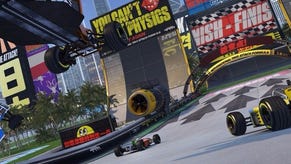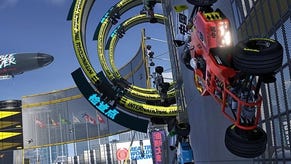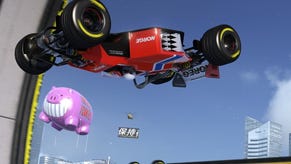Performance Analysis: Trackmania Turbo
Arcade thrills for PS4 and Xbox One - and 60fps is the target.
Trackmania Turbo hits PS4 and Xbox One this week, bringing the series' unique blend of track creation and arcade-style racing to a generation where the genre has been largely ignored. Crisp lighting and vibrant colours create a distinctively sharp feel to the game, reminiscent of the likes of OutRun 2 and Scud Race, while the wild track design takes influence from WipEout and Hot Wheels. Developer Nadeo ties this all together with an experience targeting a slick 60fps - essential in bringing the feel of the classic arcade racers to home consoles.
However, Trackmania Turbo differentiates itself from classic arcade racers by keeping the focus on stunts and time trials set on wild courses featuring corkscrew twists, loop-the-loops, and high-speed jumps. The single-player mode hosts 200 tracks set across four environments, but it's possible to create your own crazy courses and share them online, and this is where the real fun lies.
Taking to the road, the game's arcade sensibilities clearly come to life; subtle use of camera blur helps to increase the sense of speed in addition to the high frame-rate, while the high contrast art style and primary use of direct lighting creates sharp imagery that allows you to see hazards coming from a distance. Handling here is firmly focused on drifting and things only get more slippery as you move from tarmac to soft and muddy rally circuits. The 60fps update is essential to the feel of the game as we slide around right-angle corners or jump across cavernous ravines. Motion appears silky smooth and the controls are tight and responsive.
The experience feels superb, and makes us mourn the lack of modern racing games geared towards 60Hz gaming. Both consoles come close to delivering a locked frame-rate for much of the time during gameplay too, although dips in performance can occasionally creep in. Here, PS4 carves out a performance advantage while also rendering at a higher resolution than Xbox One.
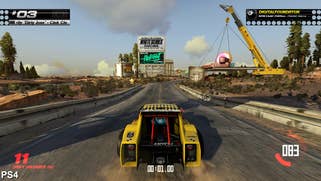
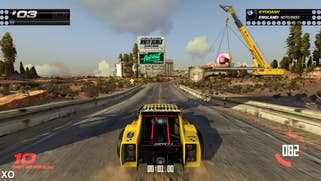
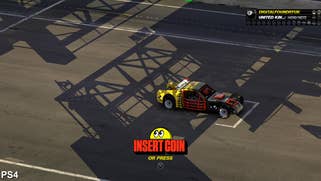


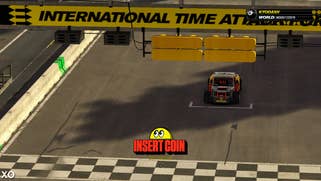
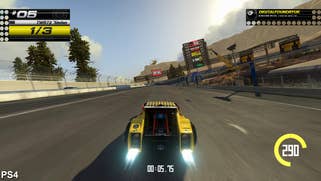
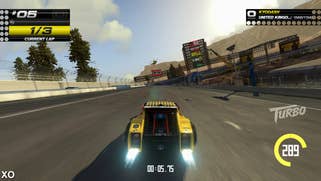

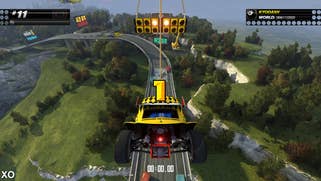
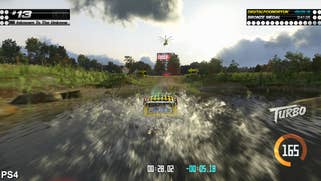
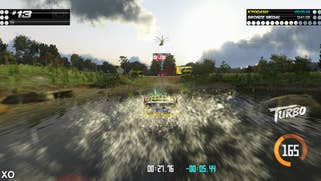
PS4 delivers a native 1080p presentation to the screen, while on Xbox One we see the use of a 900p framebuffer instead, with both making use of post process anti-aliasing. This leads to slightly more in the way of jaggies and sub-pixel shimmer on Xbox One, but on the whole the game's colourful imagery remains sharp and the drop in resolution doesn't obviously stand out. PS4 simply gives us a slightly more refined image here.
The 30 per cent reduction in pixel count on Xbox One doesn't unduly impact the presentation, but it doesn't quite claw back enough GPU time to match PS4 in terms of overall stability under load. Pre-race sequences on the more detailed tracks show performance impacted on both consoles, with the game tearing and dropping frames. Here the PS4 version takes the lead, though it's worth pointing out that screen wobble and judder is obvious to see in these scenes on both platforms.
Performance quickly stabilises in-game on PlayStation 4, with only very occasional pockets of tearing manifesting in more demanding scenes. For the most part, frame-rates stick to the 60fps target, and aside from rare instances of momentary judder, the core gameplay remains fluid and responsive throughout. By comparison, tearing and dropped frames are more common on Xbox One under similar racing conditions. A noticeable 'screen wobble' creates judder that proves distracting when performance is impacted.
Curiously, it's not always clear what causes the performance dips on Xbox One, and the results often change when replaying the same race multiple times. On one run through we might see more tearing, while in another we may experience very little at all. This isn't really an issue on PS4 as performance is more stable. Thankfully, due to the use of an adaptive v-sync on both systems, controller response isn't overly compromised when the engine is under load, so steering still feels pretty crisp in situations where performance isn't completely stable.
Other than that, there's little to separate Trackmania Turbo on both consoles. Core asset quality and effects work are a match between platforms, with textures only appearing a touch softer on Xbox One due to the 900p framebuffer. Occasionally, the PS4 game feature extra grass across parts of the environment outside the track, though this is only visible during pre-race sequences or when performing massive jumps across the landscape. Even then it's hard to pick up these extra details when driving at speed.
On the whole both consoles hand in a highly enjoyable slice of arcade-style racing action, with the ability to create and share tracks online being a high point. The PS4 offers up the more refined experience of the two, due to slightly more stable performance and cleaner image quality, though the Xbox One version isn't too far behind. The game spends much of the time running at 60fps, and during these moments both look and feel practically identical. The inconsistent performance is our main sticking point on Xbox One, but it's far from a deal breaker and hopefully it can be addressed in a future patch.



